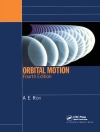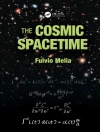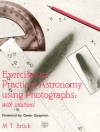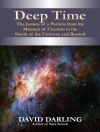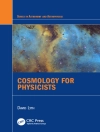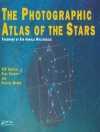Space debris and asteroid impacts pose a very real, very near-term threat to Earth. In order to help study and mitigate these risks, the Stardust program was formed in 2013. This training and research network was devoted to developing and mastering techniques such as removal, deflection, exploitation, and tracking. This book is a collection of many of the topics addressed at the Final Stardust Conference, describing the latest in asteroid monitoring and how engineering efforts can help us reduce space debris. It is a selection of studies bringing together specialists from universities, research institutions, and industry, tasked with the mission of pushing the boundaries of space research with innovative ideas and visionary concepts.
Topics covered by the Symposium:
- Orbital and Attitude Dynamics Modeling
- Long Term Orbit and Attitude Evolution
- Particle Cloud Modeling and Simulation
- Collision and Impact Modelling and Simulation, Re-entry Modeling and Simulation
- Asteroid Origins and Characterization
- Orbit and Attitude Determination
- Impact Prediction and Risk Analysis, Mission Analysis-Proximity Operations, Active Removal/Deflection Control Under Uncertainty, Active Removal/Deflection Technologies, and Asteroid Manipulation
Cuprins
Preface.- Section 1: Mission to Asteroids.- Chapter 1: Optimization of Asteroid Capture Missions using Earth Resonant Encounters.- Chapter 2: Evaluating Proximity Operations through High-fidelity Asteroid Deflection Evaluation Software (HADES).- Chapter 3: Prediction of Orbital Parameters for Undiscovered Potentially Hazardous Asteroids Using Machine Learning.- Section 2: Orbit and Uncertainty Propagation.- Chapter 4: Exploring Sensitivity of Orbital Dynamics with Respect to Model Truncation. The Frozen Orbits Approach.- Chapter 5: A Parametric Study of the Orbital Lifetime of Super GTO and SSTO Orbits Based on Semi-Analytical Integration.- Chapter 6: On the Use of Positive Polynomials for the Estimation of Upper and Lower Expectations in Orbital Dynamics.- Section 3: Space Debris Monitoring, Mitigation, and Removal.- Chapter 7: Trajectory Generation Method for Robotic Free-Floating Capture of a Non- Cooperative, Tumbling Target.- Chapter 8: Taxonomy of LEO Space Debris Population for ADR Capture Methods Selection.- Chapter 9: Remote Sensing for Planar Electrostatic Characterization using the Multi-Sphere Method.- Chapter 10: Active Debris Removal and Space Debris Mitigation using Hybrid Propulsion Solutions.- Chapter 11: The Puzzling Case of the Deep-Space Debris WT1190F: A Test Bed for Advanced SSA Techniques.- Chapter 12: Development of a Debris Index.- Section 4: Re-Entry Analysis and Design for Demise.- Chapter 13: A Multidisciplinary Approach of Demisable Tanks’ Re-Entry.- Chapter 14: Design-for-Demise Analysis using the SAM Destructive Re-Entry Model.- Chapter 15: Low-Fidelity Modelling for Aerodynamic Characteristics of Re-Entry Objects.- Chapter 16: Re-Entry Predictions of Potentially Dangerous Uncontrolled Satellites: Challenges and Civil Protection Applications.- Chapter 17: Uncertainty Quantification for Destructive Re-Entry Risk Analysis – JAXA Perspective.
Despre autor
Massimiliano Vasile is the head of the Aerospace Centre of Excellence at the University of Strathclyde, UK, and is the general coordinator of the Stardust ITN. Edmondo Minisci is an academic at the University of Strathclyde, UK, and is the coordinator of the training programme of the Stardust ITN. Peter Mc Ginty is the Stardust ITN administrator based at the University of Strathclyde, UK. Leopold Summerer is the head of the Advanced Concepts Team at ESA-ESTEC, Netherlands.


